Name some of the great cities of Europe and I bet Lisbon (Lisboa) won’t be on your list. But, perhaps it’s time to start thinking about the capital of Portugal.
Now Portugal in general gets passed over by most folks, at least a lot of Americans. Everyone is in a hurry to get to France, Italy, Germany, the the UK. But, this country has historical cities, quaint villages, gorgeous natural landscape, fabulous beaches with a diverse coastline, great food and world-class wine. And, it’s cheaper than its other western European neighbors.
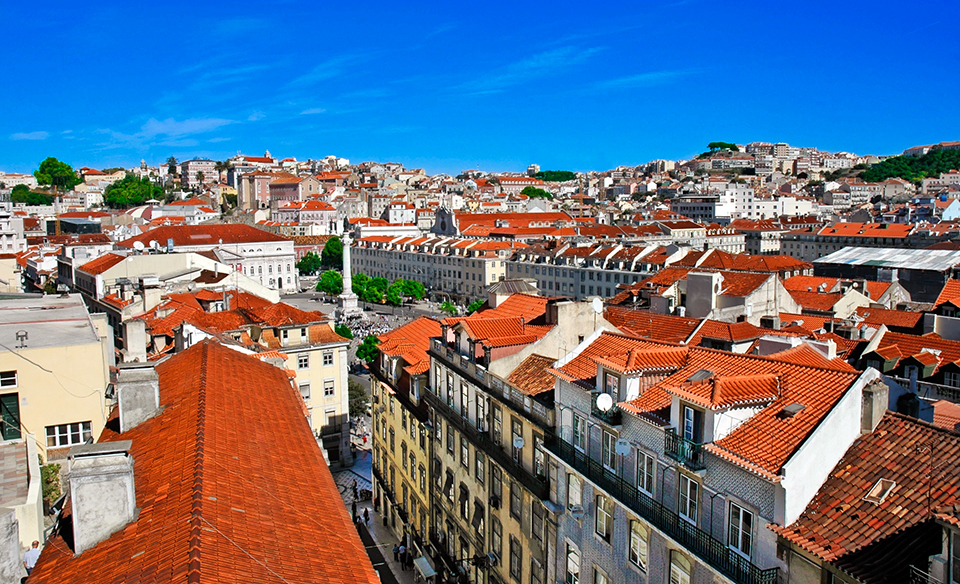
Lisbon, Portugal
Lisbon is the place to start.
This city lying on the northern banks of the river Tejo was built on seven hills just like Rome, Istanbul and San Francisco. So, yes, you’ll be walking some hills.
But, what a gorgeous city! There are several neighborhoods or barrios to Lisbon. All of them are worthy of some time.
The Barrios of Lisbon
The Alcântara neighborhood, along the riverside, is known for its clubs and bars that used to be old dock warehouses. It’s a young, hip place to be.
Alfama is the oldest barrio of Lisbon. It’s often been known to be the poorest area where many of the fishermen lived. But, it has seen some revitalization of late. It’s still a tangled maze of narrow streets that is fun to wander around. You’ll find many of the Fado bars here. Fado is a traditional music of Portugal known for being quite melancholy but very beautiful.
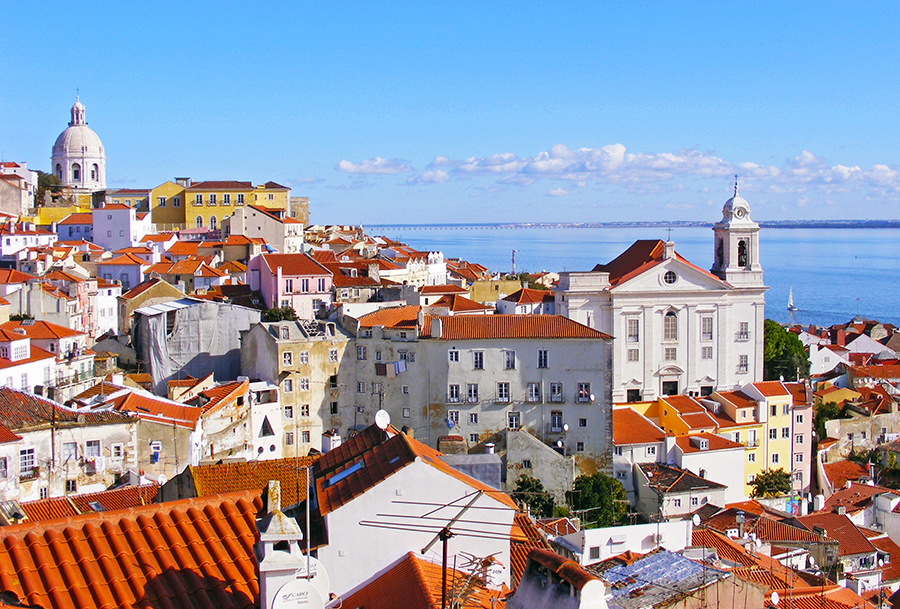
Alfama barrio and River Tejo, Lisbon, Portugal
The Moorish part of the city is Mouraria. It’s one of the most traditional neighborhoods.
Barrio Alto, upper quarter, has it all. It’s residential, but also has fabulous shops, restaurants, clubs and bars. There’s a wonderful mix of people here as well.
In between the Barrio Alto and Alfama lies the Baixa. This is the heart of Lisbon that was constructed after the earthquake of 1755 that ruined so much of this incredible city. Unlike Alfama, the streets are nicely lined up in a grid pattern. And, interestingly enough, the buildings that were built after the earthquake are some of the first examples of earthquake-resistant structures. Here you’ll find the main thoroughfare, Avenida da Liberdade, which was modeled after Paris’ Champs-Élysées. It leads right down to the water of the River Tejo. It’s stunning.
Belém is famous for being the departure point for so many famous explorers. If you’re an adventurer at heart, you can’t miss this barrio. It’s definitely one of the most visited neighborhoods with good reason. The Belém Palace, Torre de Belém and the Mosteiro dos Jerónimos are all sites you don’t want to miss.
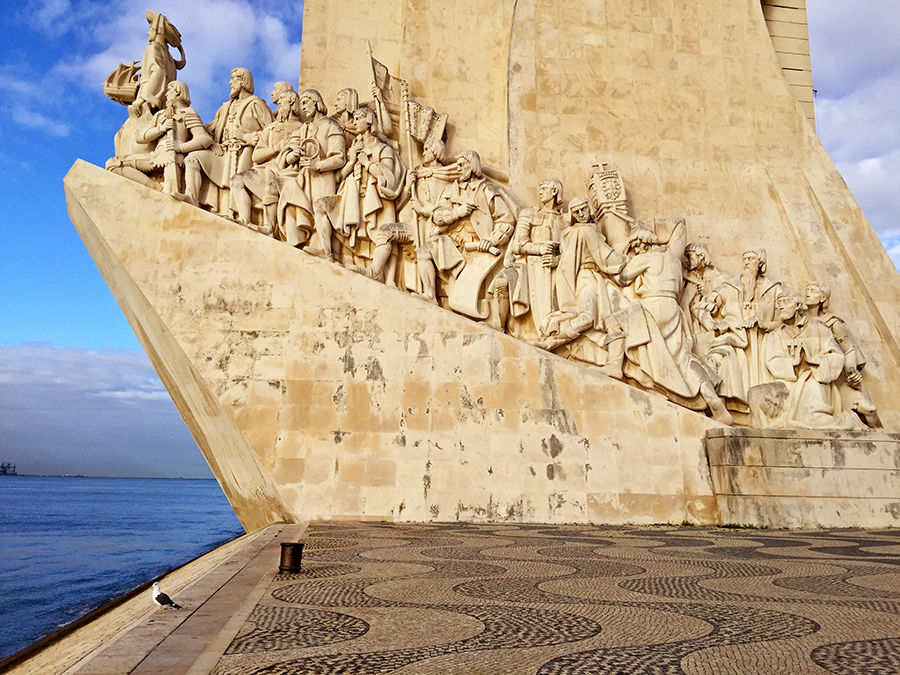
Statue to the explorers, Lisbon, Portugal
Chiado is right next to Barrio Alto. It’s known to be a shopping district with a mix of old and new. There are also some fabulous museums and theaters here, including the opera.
Not as heavily visited as it’s a bit away from some of the more touristed and sight-filled barrios is Estrela. This neighborhood is home to the 18th century Estrela Basilica. You can actually see the dome from other parts of the city.
The newest district in Lisbon is the Parque das Nações, the Park of Nations. It was built as part of the World Exhibition of Lisbon in the late 1990’s. It’s definitely the modern part of the city, but is very pedestrian-friendly. Here you’ll find the Casino Lisbon and the Oceanário de Lisbon.
One of my clients, Mike, visited Portugal last year. He and his girlfriend wanted to spend some time down in the Algarve, which is the south of the country. The Algarve is known for some fabulous beaches. Lisbon was not necessarily at the top of their list, but I suggested it might be nice to fly in and out of Lisbon and spend some time here.
It was definitely a suggestion they were happy with. I’ll let Mike tell you about their experience in Lisboa.
Mike’s Take on Lisbon
Lisboa…we wish we had more time there. We walked the whole town — up and down the hills. I don’t think there’s any need for a taxi if you’re staying in one of the three main city districts. It’s very much like San Fransisco, not just in the terrain, but in the transportation as it has trolley cars too!
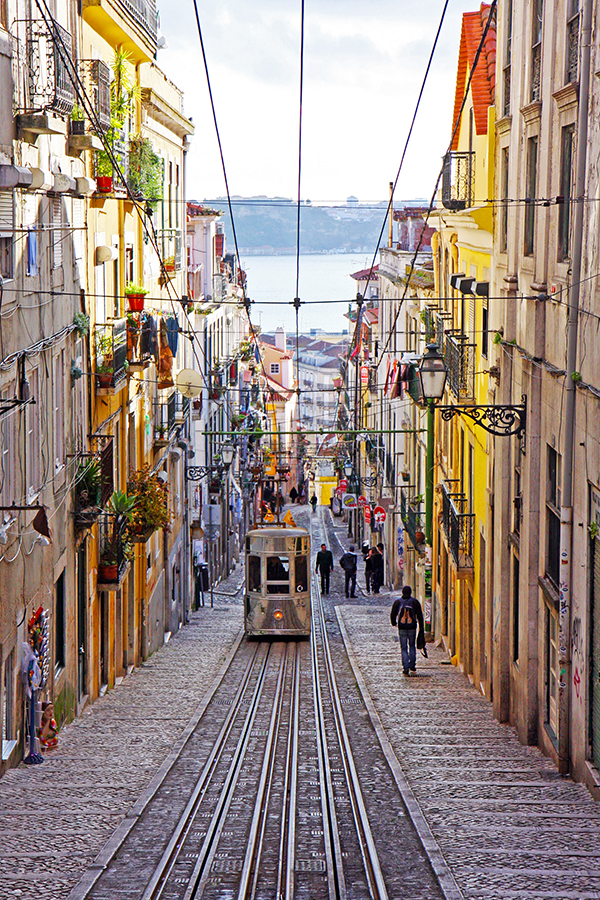
Street in Lisbon, Portugal with trolley
Lisbon was crushed by an earthquake in 1755, and half the city was lost. As a result, you have one very old part of town, and one pretty old part of town. When they were rebuilding the part destroyed by the earthquake, Paris happened to be the cultural epicenter of Europe, and they modeled the new Lisbon after Paris. The main thoroughfare, Avenida da Liberdade was intended to mimic the Champs-Élysées and they even built their own version of an Arc de Triomphe where that road ends on the banks of the River Tejo.

Lisbon’s Rua Augusta Arch – ©Mike Ridgeman
Lisbon has it all, music, fashion, food — my god the food! Linguistically, Lisbon (and Portugal in general, it seemed) has it all too. From what we learned, because Portugal is so cheap, it’s a huge vacation spot for many Europeans. Thus, you’ll hear virtually every language in every cafe. If a traveler were to know even one other language, not necessarily Portuguese, commerce and transportation will be relatively easy. I will say that some of the servers we had in restaurants told us how much they appreciated my efforts to speak Portuguese. I got free lessons everywhere I went. I learned that many Portuguese were a little ticked off at the fact that other Europeans come in and expect to speak their own language without even an attempt at Portuguese.
As anywhere in Europe, the history is so rich, so old. Lisbon’s position on the European mainland made it a hub for exploration and, later on, to the slave trade as well. One block has a monument celebrating a great explorer and the next a monument where people stop to reflect on the very spot where slaves were auctioned off to the highest bidder.
We always felt safe, even in the places where we were being offered any imaginable narcotic known to man!
In the late 1930’s, the Prime Minister of Portugal paid a visit to Brazil. On that trip he marveled at Christ the Redeemer and vowed to build something even more impressive in his own country. He would be damned before being upstaged by a former colony!!! WWII, however, financially ruined little Portugal, and there was not a great amount of money lying around to build an impressive Christ statue. So they did what they could with what they had. They built their own version of the Redeemer statue on the southern bank of the River Tejo, overlooking the city of Lisbon. I think it’s something like 1/3 the size. Alison and I called him B-team Jesus, Junior Varsity Jesus, or just JV Jesus for short.
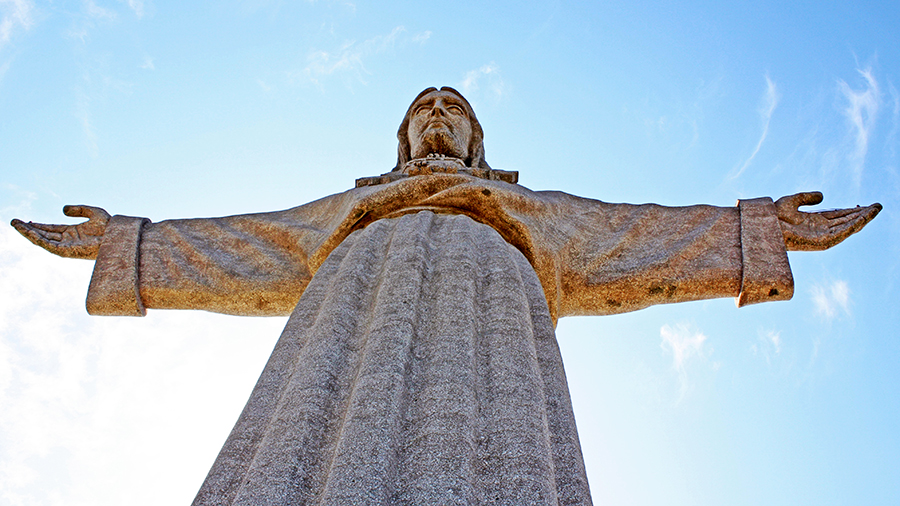
Lisbon’s Christ the Redeemer statue
What Do You Think of Lisbon Now?
Is Lisbon on your list now? I’ve actually seen a few articles lately on Lisbon with rave reviews from everyone. It’s a big enough city to offer a bit of something for everyone, yet small enough to walk around. Plus, it’s super affordable. So, don’t overlook this fabulous capital city!







